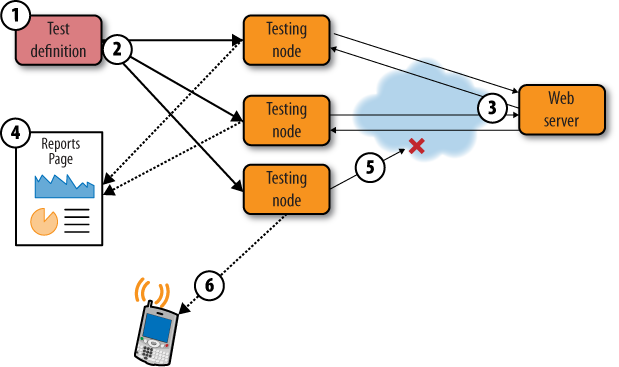Measuring Delay
There are two basic ways to measure the delay we've looked at: synthetic monitoring (also known as active monitoring) and Real User Monitoring (RUM; sometimes called passive monitoring).
Synthetic Monitoring
Synthetic monitoring involves monitoring a site's performance through a series of regular, scripted tests of the website from multiple locations. It's analogous to internal monitoring via ping, TCP connections, or HTTP requests (see Figure 11-3).

Figure 11-3. The basic steps in a synthetic monitoring service
Synthetic monitoring is great for checking whether something you know about is functioning properly. In other words, synthetic monitoring shows you whether something is working.
When to use synthetic monitoring
Synthetic monitoring and RUM are complementary technologies. Each plays a vital role in operating a web application at scale. But it's important to know when to use which tool.
Synthetic monitoring works well when you need to know about something before actual users encounter it. It's also good for creating baselines, because it can be performed at regular intervals regardless of visitor traffic. Use synthetic monitoring for:
Monitoring key steps in your business transactions, such as the catalog page or comment process.
Measuring the health of components that you don't control but that your business relies on. This could be a Facebook fan page, a payment service, ...
Get Web Operations now with the O’Reilly learning platform.
O’Reilly members experience books, live events, courses curated by job role, and more from O’Reilly and nearly 200 top publishers.

